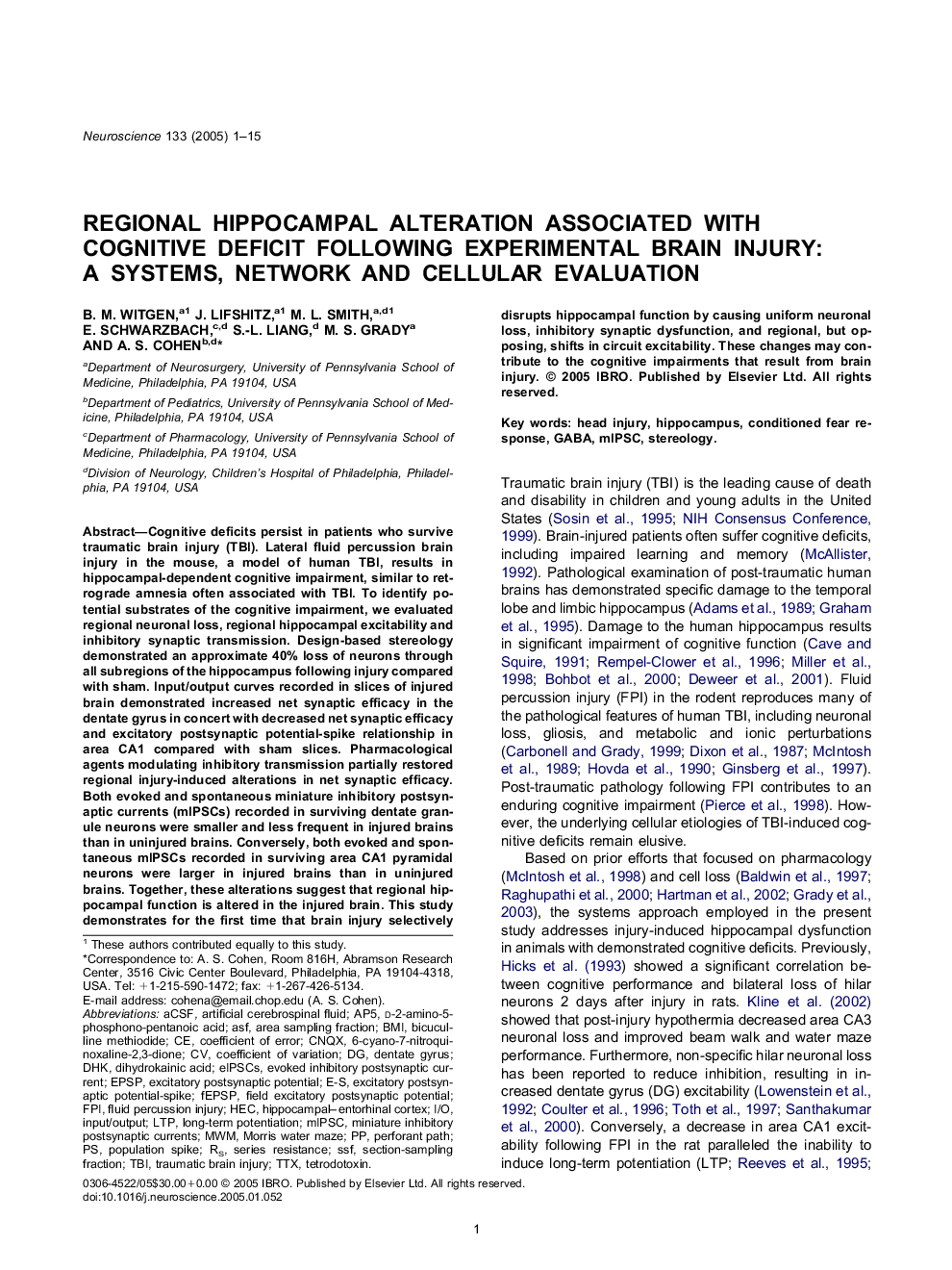| Article ID | Journal | Published Year | Pages | File Type |
|---|---|---|---|---|
| 9425425 | Neuroscience | 2005 | 15 Pages |
Abstract
Cognitive deficits persist in patients who survive traumatic brain injury (TBI). Lateral fluid percussion brain injury in the mouse, a model of human TBI, results in hippocampal-dependent cognitive impairment, similar to retrograde amnesia often associated with TBI. To identify potential substrates of the cognitive impairment, we evaluated regional neuronal loss, regional hippocampal excitability and inhibitory synaptic transmission. Design-based stereology demonstrated an approximate 40% loss of neurons through all subregions of the hippocampus following injury compared with sham. Input/output curves recorded in slices of injured brain demonstrated increased net synaptic efficacy in the dentate gyrus in concert with decreased net synaptic efficacy and excitatory postsynaptic potential-spike relationship in area CA1 compared with sham slices. Pharmacological agents modulating inhibitory transmission partially restored regional injury-induced alterations in net synaptic efficacy. Both evoked and spontaneous miniature inhibitory postsynaptic currents (mIPSCs) recorded in surviving dentate granule neurons were smaller and less frequent in injured brains than in uninjured brains. Conversely, both evoked and spontaneous mIPSCs recorded in surviving area CA1 pyramidal neurons were larger in injured brains than in uninjured brains. Together, these alterations suggest that regional hippocampal function is altered in the injured brain. This study demonstrates for the first time that brain injury selectively disrupts hippocampal function by causing uniform neuronal loss, inhibitory synaptic dysfunction, and regional, but opposing, shifts in circuit excitability. These changes may contribute to the cognitive impairments that result from brain injury.
Keywords
MWME-STBImIPSCDHKeIPSCsasfHECfEPSPAP5TTXaCSFSSF6-Cyano-7-nitroquinoxaline-2,3-dioneEPSPI/OFPITraumatic brain injuryFluid percussion injuryhead injuryStereologyPopulation spiketetrodotoxinlong-term potentiationLTPminiature inhibitory postsynaptic currentsdihydrokainic acidCNQXBMIdentate gyrusCoefficient of Variationcoefficient of errorMorris water mazeartificial cerebrospinal fluidbicuculline methiodidePerforant pathSeries resistanceevoked inhibitory postsynaptic currentHippocampusinput/outputexcitatory postsynaptic potentialField excitatory postsynaptic potentialarea sampling fractionGABA
Related Topics
Life Sciences
Neuroscience
Neuroscience (General)
Authors
B.M. Witgen, J. Lifshitz, M.L. Smith, E. Schwarzbach, S.-L. Liang, M.S. Grady, A.S. Cohen,
